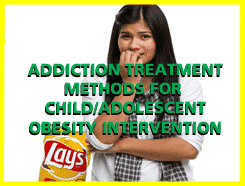
Managing pediatric obesity requires more than just prescribing medication. Experts at the American Academy of Pediatrics (AAP) 2025 National Conference and Exhibition emphasized that successful treatment demands a whole-child approach, such as addressing not only physical health, but also psychological and social factors that shape a child’s well-being.
Key takeaways
- A whole-child approach is essential, considering physical, psychological and social health.
- Medication choice depends on patient preference, comorbidities, contraindications, and insurance coverage.
- Open communication, stigma awareness, and family engagement are critical for long-term treatment success.
Establishing criteria for pharmacologic therapy
According to Ihuoma Eneli, MD, MS, professor of pediatrics at the University of Colorado,
Obesity is defined by a body mass index above the 95th percentile. We always treat obesity as part of a whole-child approach.
This means evaluating not only a child’s physical condition, but also their mental health, environment, and social drivers of health. Shared decision-making between clinicians, patients and families helps determine whether to introduce pharmacologic therapy.
Jaime Moore, M.D., a physician researcher at Children’s Hospital Colorado, added that lifestyle interventions and patient interest should always be considered before moving to medications.
Choosing between medications
Several medications are available, but the best choice depends on the individual child. Dr. Moore highlighted commonly used options: Phentermine, topiramate, liraglutide, semaglutide, and metformin (off-label but frequently used).
Factors that guide selection include:
- Patient preference: oral vs. injectable, daily vs. weekly dosing
- Contraindications, such as a kidney stone history or mental health considerations
- Comorbidities: Children with prediabetes or fatty liver disease may benefit more from GLP-1 receptor agonists due to their effects on hemoglobin A1c and liver enzymes
Addressing barriers to access
Access to medications remains one of the biggest challenges in pediatric obesity care. Dr. Moore emphasized:
We want to use the medications that are easy to access and are inexpensive.
Phentermine, topiramate and metformin are more likely to be covered by Medicaid and commercial insurance. Clinicians can also advocate for policy changes so that insurance coverage keeps pace with evidence-based treatment.
Engaging families and addressing stigma
Treatment conversations with families must be sensitive and inclusive. Dr. Eneli explained that families typically fall into two groups: Those actively asking about medication, and those unfamiliar or hesitant about medication. For both groups, the clinician’s role is to listen, reflect, and present all treatment options, including behavioral strategies, pharmacotherapy, and even bariatric surgery where appropriate.
Stigma also plays a major role in care. Dr. Moore shared the advice of one patient:
When you walk into the room, don’t let my weight be the first thing that you see.
This reminder underscores the importance of reducing bias and treating each child as more than their weight.
Both physicians agreed that more research is needed to understand the long-term safety and effectiveness of pharmacologic therapy for pediatric obesity. But one thing is clear: Effective treatment requires partnership with families, awareness of social context, and a compassionate, stigma-free approach.
Your responses and feedback are welcome!
Source: “Ihuoma Eneli, MD; and Jaime Moore, MD, discuss pediatric obesity management,” Contemporary Pediatrics, 10/2/25
Source: “What’s New in Obesity Management,” presented at the American Academy of Pediatrics 2025 National Conference & Exhibition, 9/26 – 9/30/25
Image by Luis Quintero/Pexels

 FAQs and Media Requests:
FAQs and Media Requests: 











